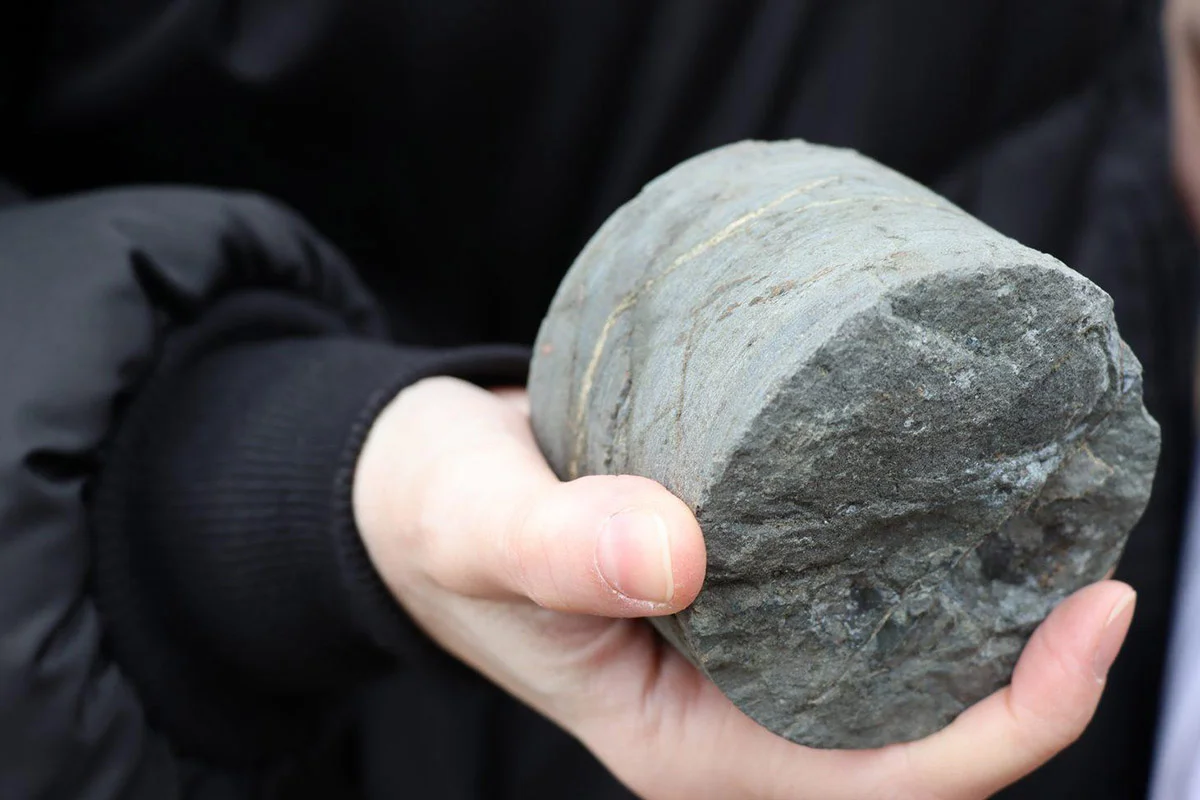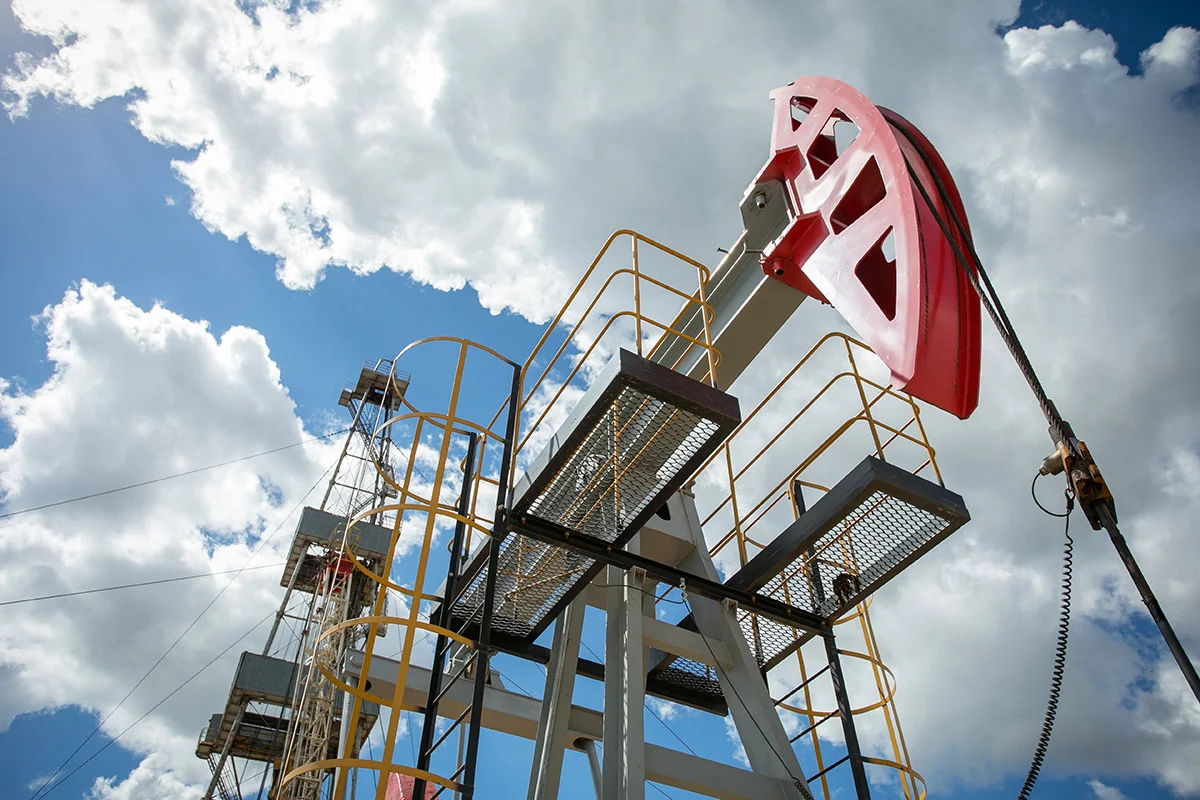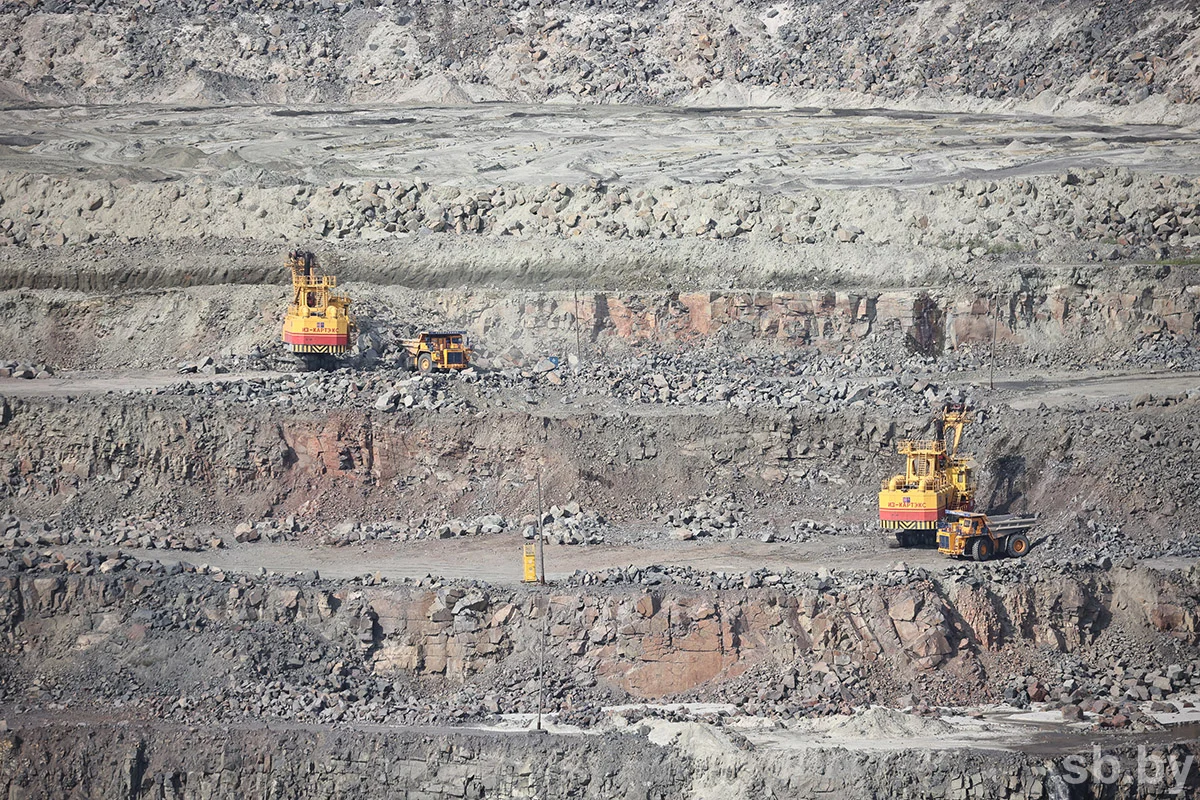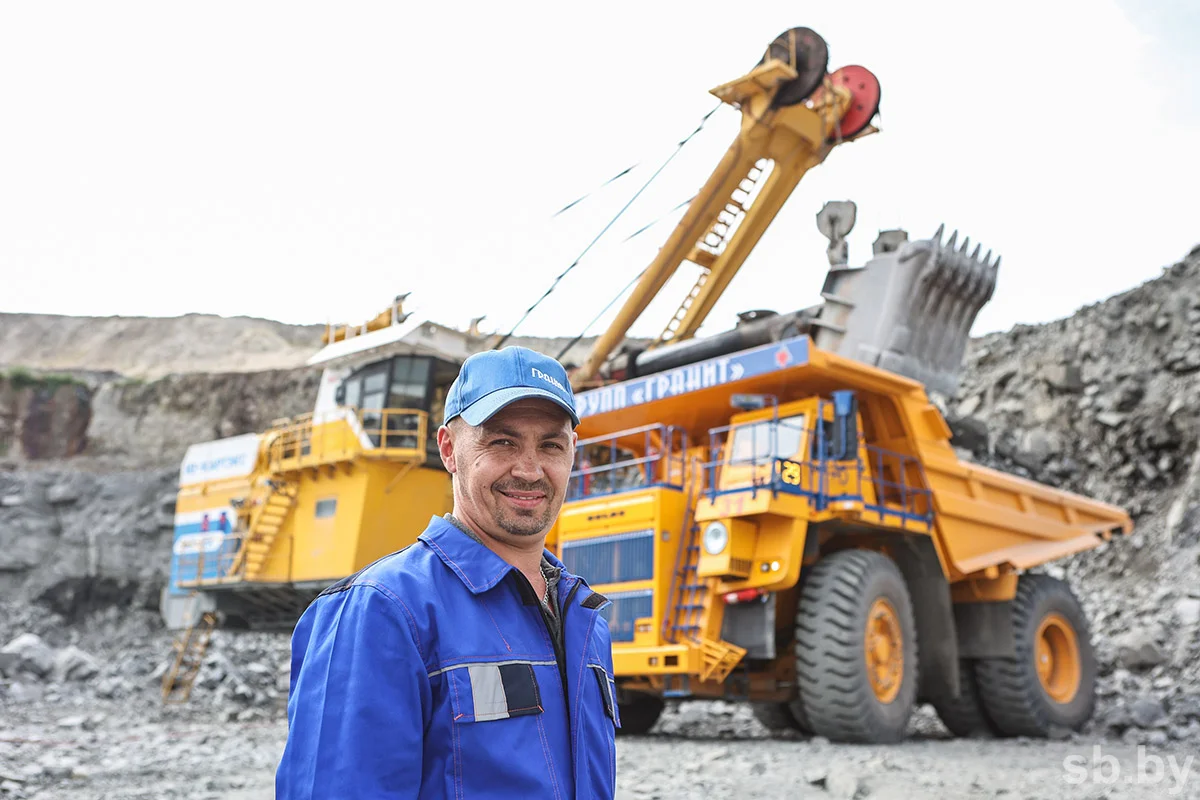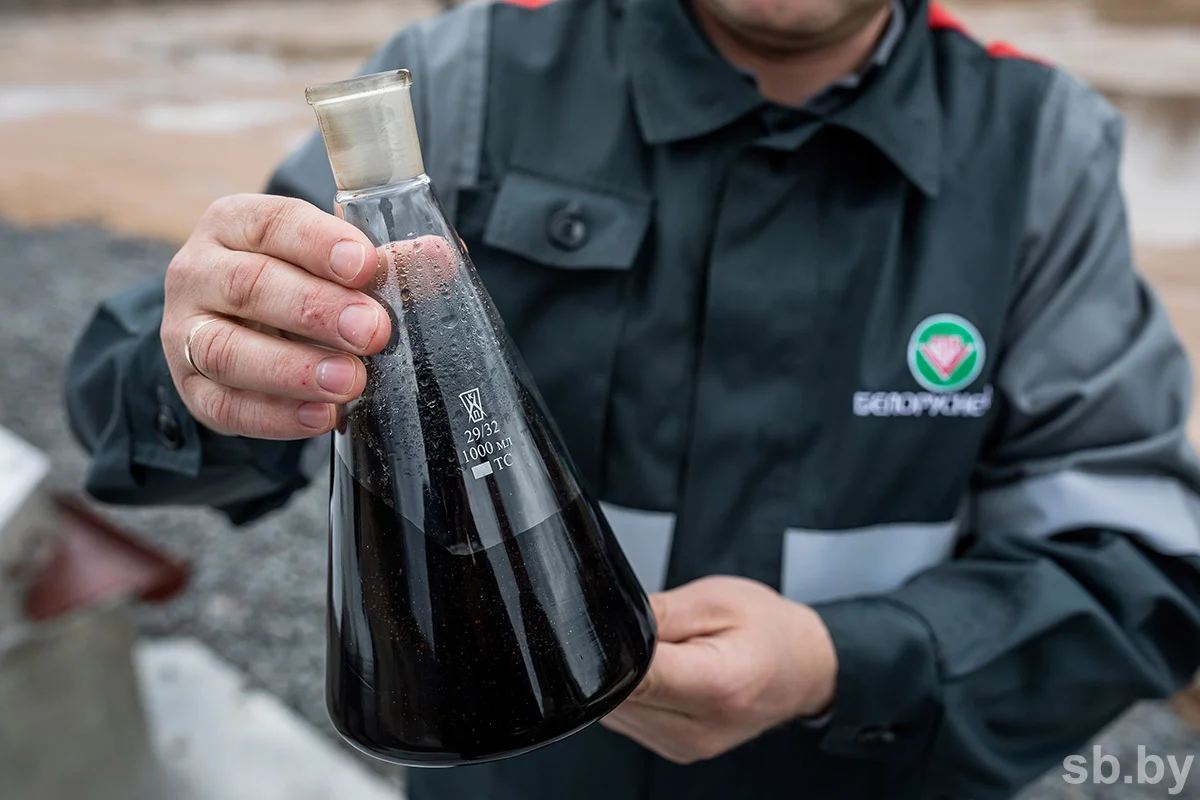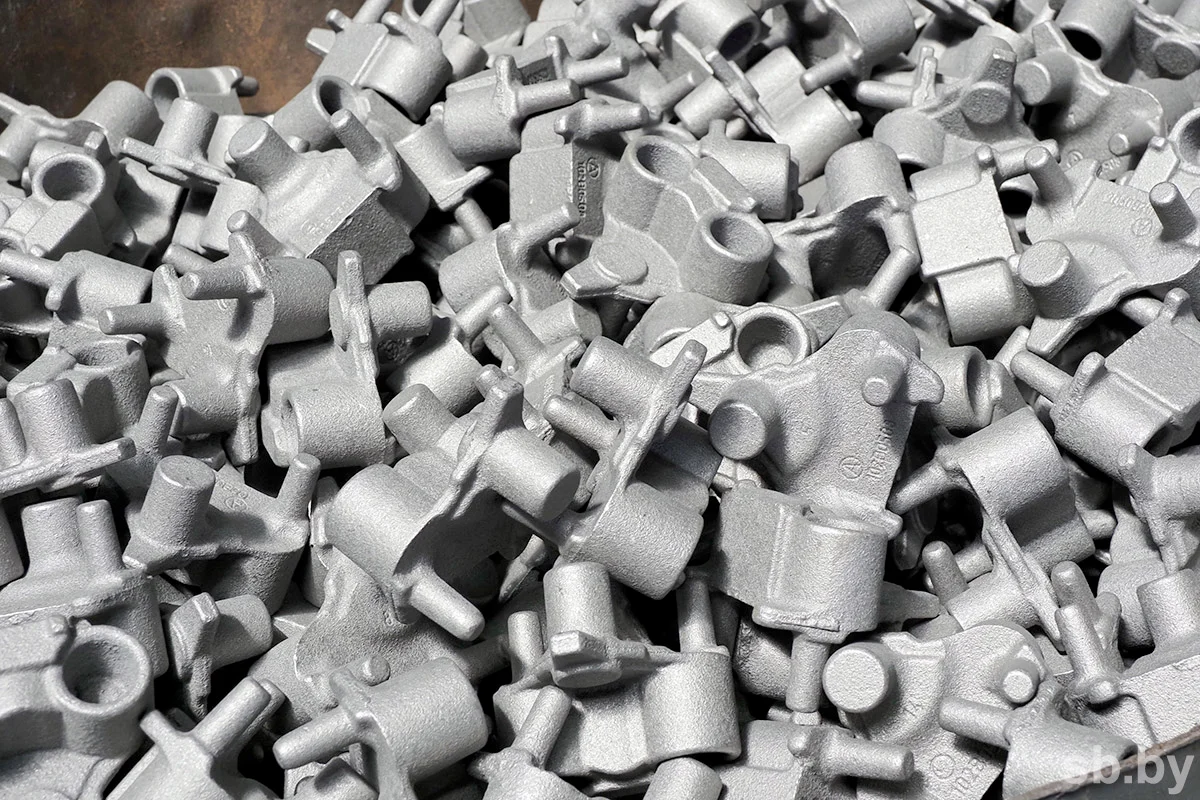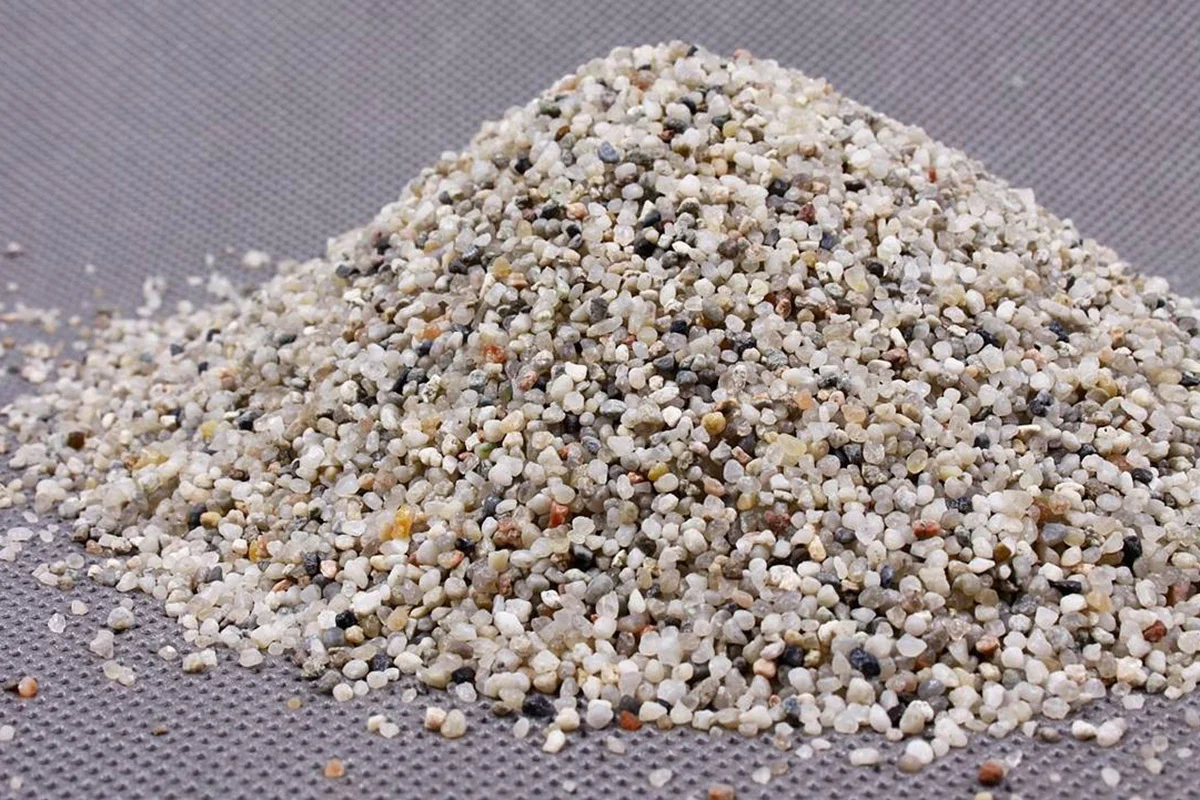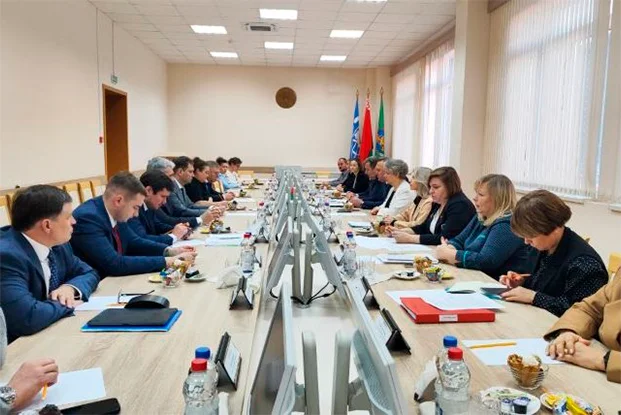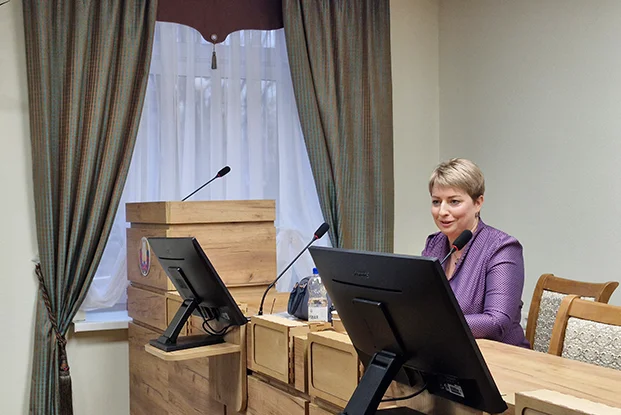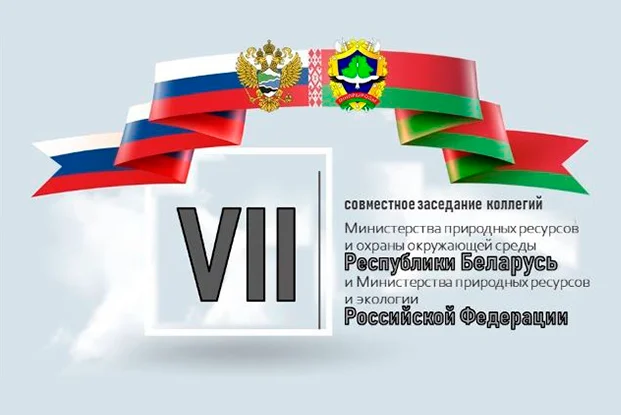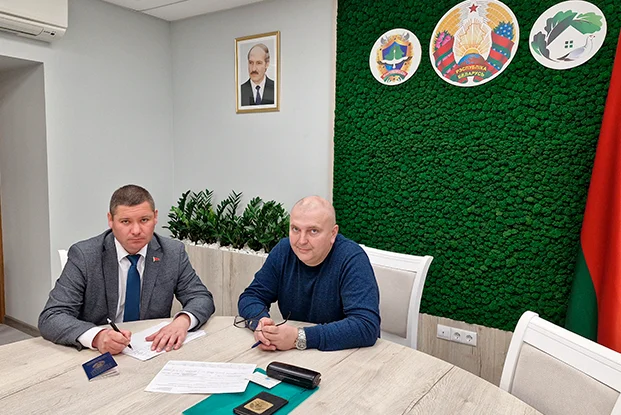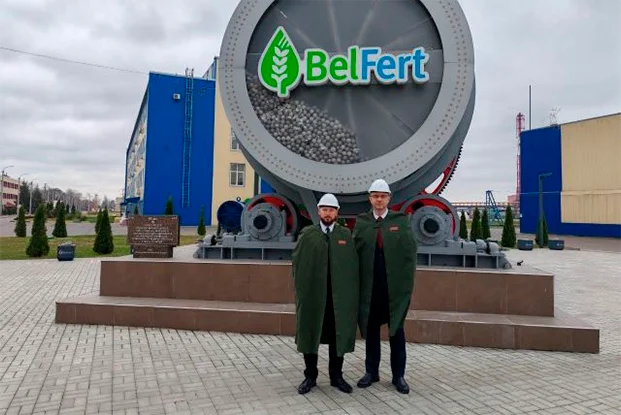The myth that our country’s lands are poor in minerals has long since sunk into oblivion. Today, we know for sure: we have not only potassium salts, sands, kaolins, clay, dolomite, chalk, but also basalts, tuffs and much more. About 50 different types of minerals have been identified in Belarus, and the total number of deposits exceeds 14 thousand. Today, an important task is being solved to replace imported raw materials with domestic ones where it makes economic sense. “R” learned about the specifics of this work and the secrets that the Belarusian subsoil holds from Vasily Kolb, head of the Main Directorate of Natural Resources of the Ministry of Natural Resources and Environmental Protection.
Sands – in progress
— Vasily Yuryevich, today, given the external challenges, the issue of import substitution of raw materials in Belarus is quite relevant. It was previously noted that a number of government agencies and enterprises began to carry out large-scale work to reduce the import of mineral raw materials and maximize the use of their own. How can you assess the results of 2023 in this direction?
— Indeed, today many enterprises in the country have changed their strategy in terms of using mineral raw materials. Work has already been organized in a number of areas to increase their production, and approaches to mineral enrichment technology are being revised. And this is despite the fact that just a year ago the work of some enterprises was based only on imported raw materials.
During 2023, the Ministry of Natural Resources, together with interested departments and organizations, developed about 15 proposals for the development of the mineral resource base. These approaches will not only significantly reduce the volume of imports of minerals available in the country, including sand, kaolin, clay, dolomite, chalk, basalt, but also increase the efficiency of existing production facilities for the extraction and primary processing of raw materials.
As for the introduction of many new deposits into development, there are restraining factors. One of them is the low economic efficiency of deposit development due to the quality of raw materials, which is inferior to imported ones, the second is the complex mining and geological conditions of development. Nevertheless, work on import substitution continues.
Having analyzed the operational information, it can be noted that, compared to 2022, there is an increase in the extraction of potassium salts by 170.4 percent, glass sand by the enterprise OJSC Gomelsteklo by 115 percent, building stone RUPP Granit by almost 113 percent and KPRSUP Gomelobldorstroy by 154 percent, chalk and marl used for the production of cement by organizations of the Belarusian Cement Company by 103.7 percent.
At many enterprises in the country, the strategy regarding the use of mineral raw materials has changed.
— Which of the country’s enterprises’ experience in terms of raw material import substitution can be called particularly successful?
— At the top of the list are organizations of the Ministry of Industry that are carrying out targeted work, in particular, to increase the share of domestic quartz sand in the production of foundry products. Thus, since August 2022, Osipovichi Automobile Units Plant OJSC has completely switched to domestic raw materials, having used over 500 tons of sand during this period. In 2022, the branch of Atlant CJSC of the Baranovichi Machine-Tool Plant completed testing and a complete transition to the use of this raw material in the molding production of the Gomel Mining and Processing Plant Branch of Gomelglass OJSC. In 2023 alone, more than 4.4 thousand tons were processed. The shares of imported sand at MTZ OJSC and MAZ OJSC decreased to 12 (6.4 thousand tons) and 30 percent (4.5 thousand tons), respectively.
The use of imported sand, which is used in oil production, is reduced. And this is 70-80 thousand tons per year. RUE “Production Association “Belorusneft” began developing the Khotyslavskoye Zapadnoye sand deposit in the Malorita district. Also in 2023, OJSC “Gorynsky KSM” put into development the Gorodnoye refractory clay deposit of the Stolin district with the organization of selective mining to obtain higher-quality raw materials necessary for the production of ceramic products, in particular, OJSC “Keramin”.
Today and for the future
— What minerals are Belarusian geologists working on today? Have the plans for their exploration and production been fulfilled over the past year?
— In 2023, in accordance with the State Program “Environmental Protection and Sustainable Use of Natural Resources” for 2021-2025, all indicators for mineral growth were met. In particular, we grew in oil, basalts, and sands.
In 2023, in accordance with the State Program “Environmental Protection and Sustainable Use of Natural Resources” for 2021-2025, all indicators for the growth of mineral resources were met.
PHOTO BY DARYA TITOVA
Thus, in the northern part of the Western section of the Sloboda deposit in the Minsk region, an increase in reserves of silicate sands of 7.2 million tons was obtained, basalts at the Novodvorskoye deposit in the Pinsk region – 54.5 million tons. Also, during the exploration work, basalt resources were estimated at the identified Pinsk and Ivanovich areas in the amount of 648 million tons and oil at the Zhukovich structure – 457 thousand tons.
As for the extraction of minerals, according to operational data, we are seeing an increase in this area. The enterprises have developed corresponding strategies. As an example, RUE “PO Belorusneft”, which, in accordance with the strategy for the development of the petrochemical complex until 2030, achieved a record oil production of 1.87 million tons last year, which is 103 percent higher than the 2022 figure.
— On the instructions of the Government, the Ministry of Natural Resources, together with interested parties, has compiled a list of potential deposits that are promising for development. Which of them are included in the document?
— Indeed, at the beginning of last year we conducted an analysis of the most popular areas of exploration and further study of minerals. Based on the results of this work, Order No. 92r of Prime Minister Roman Golovchenko defined the List of deposits for new development, which includes the Brinevskoye gypsum and anhydrite deposit, Kustovnitskoye rock salt, Mstislavskoye phosphorites, Zaozernoe dawsonite-bauxite ores, Novodvorskoye basalts and tuffs, Ostrozhanskoye bentonite clays, and Sitnitsa kaolin. A list of works for further exploration of these objects until 2025 has been determined.
Last year, detailed exploration of the Novodvorskoye basalt deposit was completed and a feasibility study for the development of the deposit was compiled. Technological tests of samples of bentonite clays from the Ostrozhanskoye deposit and kaolins from the Sitnitsa deposit are also underway both in specialized scientific laboratories in Belarus and directly at industrial enterprises.
Work on the remaining fields will be carried out in 2024–2025.
— Is there a need today to improve the technical and technological base of geological exploration?
— Improving the material and technical base of geological exploration enterprises, like any other enterprises, is a continuous process. It helps to reduce financial costs for these works, speed them up and improve their quality. For example, with the support of the President, the state enterprise “SPC for Geology” has been modernizing its material and technical base since 2022 – 20 units of modern machinery and equipment have been purchased. In addition, three drilling rigs on KAMAZ chassis, as well as units for the modernization of existing drilling rigs, can be noted. This year, the purchase of modern machinery and equipment is also planned.
We are exchanging for domestic
— What raw materials of our enterprises in the future, in your opinion, can and should be replaced by Belarusian raw materials?
— Despite the developed raw material base for such important minerals as kaolin, quartz sand, clay, gypsum, dolomite, chalk, basalts, there is still a stable import. We believe that the existing deposits of these minerals in Belarus are promising in terms of import substitution. And work in this direction continues.
First of all, we can talk about the potential transition to domestic raw materials of enterprises producing basalt products. These are not only mineral wool slabs and continuous basalt fiber, but also landscaping elements, such as, for example, paving slabs.
PHOTO BY IVAN YARIVANOVICH
Also, non-fuel peat products have significant potential. We are talking about the creation and implementation of new fertilizers and nutrient soils, sorption materials, activated carbon and others. And there are such examples in the country.
In the near future, it is expected that the Sitnitsa kaolin deposit will be involved in the development. This raw material is used in the production of ceramic products, and work is currently underway to improve its quality and prepare the results for further use in the country’s economy.
The foundry industry is showing interest and is actively working on import substitution – using molding sand, the glass industry – quartz sand for the production of glass products, and the ceramic industry – refractory clays.
For these purposes, the country has explored mineral resources. It is necessary to improve the processing technology in order to increase their quality to industrial requirements.
— In March 2023, large-scale work began on detailed exploration of basalts and tuffs of the Novodvorskoye deposit. What is the prospect of reducing imports of these minerals in this regard?
— In the first half of last year, detailed exploration work on basalts and tuffs of the Novodvorskoye deposit was completed. Industrial reserves of basalts amount to more than 54 million tons, and tuffs – over 8 million. A feasibility study for the development of the deposit has been compiled.
As part of the feasibility study, we analyzed the global and domestic basalt consumption market and the production of products based on it, substantiated the method and systems for developing the deposit, the annual productivity of the quarry and crushing and sorting complex with calculations of technical and economic indicators for the development of the deposit for several selected optimal options. In addition, we can already say today: the launch of this complex will reduce basalt imports (4.1 million rubles for nine months of 2023) and create about 460 new jobs in the region, as well as completely replace raw material imports and provide existing production, leaving the currency in the country.
SB.BY
— How do you generally assess the economic benefits of replacing imported raw materials with Belarusian ones for industrial purposes?
— First of all, by extracting our own minerals, we thereby ensure the economic security of our republic and reduce its dependence on other countries in terms of imports. Secondly, by involving new deposits in development, we can talk about creating new enterprises in the regions or increasing the production capacity of existing enterprises. And this means new jobs, increased revenue, tax revenues, production of new types of products and expansion of the range.
Site information sb.by






